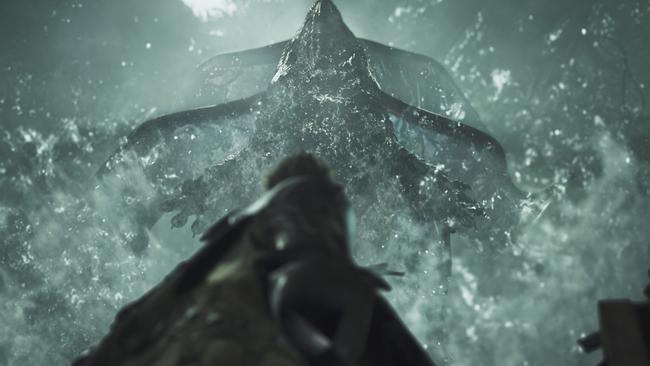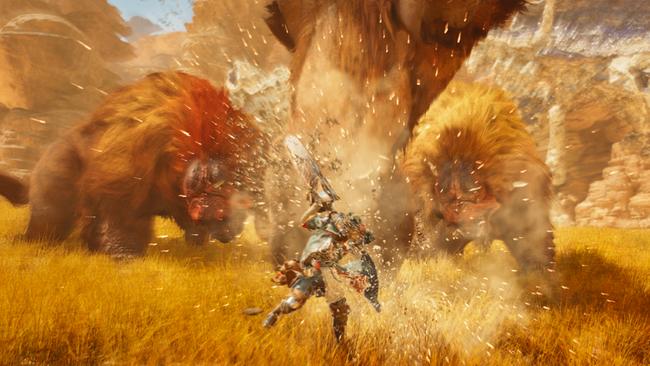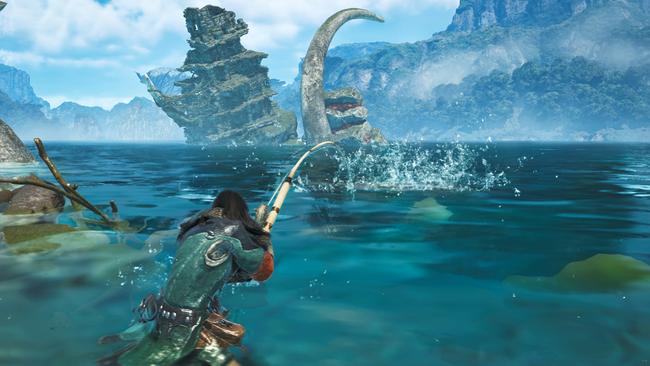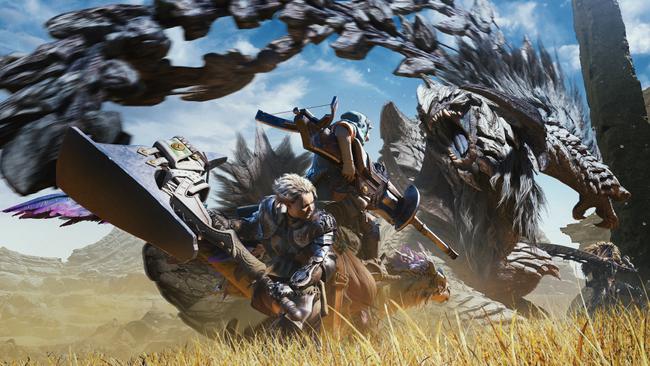
Monster Hunter Wilds is exactly what I wanted for the series' next outing - hands-on preview
Not that it was ever going to be a surprise, but Monster Hunter Wilds was absolutely one of the standouts of Tokyo Game Show for me. Barring some catastrophe, that was always going to be the case - and while I'm absolutely concerned with the technical state of it all, doubly so after this year's Dragon's Dogma 2, that doesn't diminish from everything the game has done well - and all the promise it holds for the future of the franchise.
If you've played Monster Hunter World, and read my hands-off Summer Game Fest impressions for Wilds, you already know everything to expect here. Most of the changes and additions to the game were explained well enough then; and so I don't have too much to add on the specifics. What I will say is that I'm very happy with the new additions to Gunlance, and the return to form of Hunting Horn; those were the two weapons I opted to use during my short session during Tokyo Game Show, and I can't say I walked away displeased with the state of them. Both monsters I tackled were fairly low power, so I don't have too much to share about how it feels to tackle some of the greater challenges - but at a baseline, Wilds feels just as good as World did.

One aspect that I hadn't really understood prior to my demo, is how multiplayer matchmaking appears to work; since you can now walk from a village right into a hunt, once you've finished fighting a monster, you aren't automatically sent back to base - in fact, everyone in a party is free to return to their own devices, and you can start another hunt by targetting a specific large monster - once enough damage has been dealt, it will be labeled as your next target, alerting everyone else in the party.
It's a rather different gameplay loop from World, in that sense. While you could tackle expeditions, letting you endlessly hunt in a zone - there's a different nuance to how quests work in Wilds. It's more of a mix between the existing two gameplay styles, and I can't say I dislike it - at least for now. It kind of reminds me of how hunting monsters in Iceborne's Guiding Lands worked out, and I don't think that resemblance was unintentional.

Speaking of Iceborne, I mentioned last time that Focus Mode reminded me a bit of Iceborne's tenderize mechanic; and now that I've had some hands-on, I'm confident in my assertion that it's another take on the same idea. In Iceborne, periodically players would be strongly incentivized to use the clutch claw to latch onto a monster, to either tenderize a section of their body so that players would deal extra damage, to use slinger ammo to slingshot them into a wall for a burst of damage and a knockdown, or to gather additional slinger ammo as a drop. Focus Mode is quite a bit different in practice, even if the core idea feels like an iteration of the same core mechanic.
As you battle an enemy, they'll gain scars and wounds on specific body parts. Focus mode lets you target specific body parts with an attack, and if you target highlighted body parts, not only will your focus mode attacks deal extra damage - but they can cause a chain reaction on these wounds, leading to a burst of extra damage and a topple. In essence, it's all the core mechanics of the clutch claw in one, but in a far less inconvenient package. You aren't given any specific tells to make use of it, unlike the somewhat awkward pose that monsters would make in Iceborne; and the act of using focus mode is a far more seamless affair that doesn't actively detract from the hunt.

Now, I never had any particular problems with clutch claw conceptually - yet this undoubtedly seems a much better fit for the Monster Hunter formula, at least going by the short hands-on we had. With that out of the way, however, let's talk the other elephant in the room - performance.
I alluded to it before, but the demo that we played showcased some downright shocking performance and visuals. The underlying assets look great, but you could really feel the game struggling to maintain a steady framerate. It's uncapped - in tents you'll see the game hit 60 FPS - but anywhere outside of those menus is intensely variable. Even worse, whatever TAA algorithm that Capcom is using for upscaling is, frankly, a smearing mess. Maybe it will be better on PS5 Pro, if they opt to support PSSR - and doubtlessly on PC most players will benefit from DLSS - but it's not a great look for consoles. I shudder to think how the game will hold up on Series S, too.

Maybe things will improve by launch; recently Dragon's Dogma 2 saw a patch that greatly improved performance in CPU-bound scenarios on PC. It's also worth noting that on base PlayStation 4 Monster Hunter World also had its fair share of performance woes; so maybe it's just the fact that many games have shipped with 60FPS performance modes in recent years that has colored my expectations. Regardless, for anyone looking to play the game on consoles - get your expectations in check, if Dragon's Dogma 2 hadn't already tempered them.
Regardless - Monster Hunter Wilds is looking to be one of 2025's most exciting RPGs, and I can't wait to see more. We'll have to see if the full game can meet those expectations when it launches for PlayStation 5, Xbox Series X|S and PC (Steam) on February 28, 2025